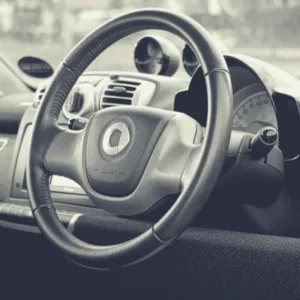Is having a second child more expensive?
The cost of having a second child is a concern for many parents. If you’re already a parent, you’ll hardly be surprised to learn that families spend an estimated $233,610 on child-related expenses, which breaks down to about $12,978 a year, or roughly $1,082 per month. Though the expense per child decreases as parents have more children, adding a second child to your family can still significantly increase expenses.
“In today’s economy, it’s important to be prepared with as much information as possible when planning for the future,” says USDA Food, Nutrition and Consumer Services Under Secretary Kevin Concannon.
To understand the cost of raising a second child (and how to reduce it) we must first understand what contributes to this astounding number.
Housing is the Biggest Contributor to Child-Related Expenses
According to the USDA , the biggest contributor to the cost of raising a child is housing. It’s no wonder housing makes the top of the list for child-related expenses. After all, housing just isn’t affordable these days. And the larger a family, the more housing expenses rise. In particular, housing contributes to the cost of having a second child because it often means that a family has to expand their living space.
, the biggest contributor to the cost of raising a child is housing. It’s no wonder housing makes the top of the list for child-related expenses. After all, housing just isn’t affordable these days. And the larger a family, the more housing expenses rise. In particular, housing contributes to the cost of having a second child because it often means that a family has to expand their living space.
But there are ways to save money on housing. If you own your home, you can consider refinancing, renting out a room, raising your insurance deductible, or even moving. Moving can be a hassle, but relocating to a smaller home, somewhere further from the city, or somewhere that charges lower taxes, could help you save quit a bit.
Some of these tips are applicable to renters, too. If moving or getting a roommate aren’t options, you can also speak with your landlord and find out if rent is optional. Your landlord may be willing to lower your rent if you’ve been consistent with your payments.
Families can also reduce the cost of housing by having children share a room. If you’re considering relocating, look into areas that give you more home for your money.
Food Cost is #2 in the Cost of Raising a Child
 The cost of food is a large contributor to the cost of raising a second child. As children get older, they eat more, and families can easily overspend on food expenses.
The cost of food is a large contributor to the cost of raising a second child. As children get older, they eat more, and families can easily overspend on food expenses.
A great way to save on food is to set a grocery budget and stick with it. Mom blogger Jordan Page suggests limiting grocery store trips to once a week, and ordering groceries online for curbside pick up. Ordering online makes it easy to avoid splurge purchases and stick to your grocery list.
Many people don’t realize that an Au Pair can make it more feasible for parents to focus on meal planning and preparing meals at home. Since Au Pairs can assist with feeding the kids and packing lunches, they can help free up time for the parents to work on healthier, more affordable dinners.
Danielle, a Host Mom from Michigan, says, “By having an additional adult in the house, we are granted the time and energy to be our best.”
The Rising Cost of Childcare is Keeping More Moms Home
 It’s no secret that the childcare options available to working parents are expensive and limited. This is why there’s been an increase in mothers opting to stay home rather than work.
It’s no secret that the childcare options available to working parents are expensive and limited. This is why there’s been an increase in mothers opting to stay home rather than work.
When you consider how many daycares won’t take children under the age of 2 due to child-teacher ratio requirements, it’s no wonder many women are putting their careers on hold rather than go through the struggle of finding childcare that works for their schedules.
Many parents describe the cost of putting two children into daycare as a “second mortgage.” This is why daycare is one of the biggest contributors to the cost of raising a second child.
But there’s good news! Depending on where you live, Au Pair childcare may be more affordable than traditional daycare in your area. And the best part? Au Pairs live in your home. In addition to saving on cost, Au Pairs give parents access to a kind of flexibility than most daycares, and even nannies, are unable to provide.
Host Mom Danielle recounts how one morning, the school called to let parents know they were closed for a snow day. It was then Danielle realized how drastically the Au Pair program had changed their lives.
“[I realized] all I had to do was let [Alessandra] know of the change. It was that simple… Before Alessandra, a 5 am phone call from my twins’ school would have put my husband and I into a tailspin.”
Education, Surprisingly, is only the Fourth-Highest Contributor to the Cost of Raising a Child
 With the price of college tuition, you’d think this would be the number-one expense on the list. (Actually, the USDA didn’t include college tuition in their estimated cost of raising a child). But even so, education is still a substantial cost for families.
With the price of college tuition, you’d think this would be the number-one expense on the list. (Actually, the USDA didn’t include college tuition in their estimated cost of raising a child). But even so, education is still a substantial cost for families.
You may currently have young children and think this point is irrelevant at the moment. However, it’s wise to contribute to a 529 plan to save for college tuition as early as possible. After all, the cost of sending your 18-year-old to college is estimated to reach an average of $500,000 within the next 16 years.
This doesn’t include the cost of private tuition or other school-related expenses while your child is growing up. If you’re planning for the cost of having a second child, think about your location and the types of schools you want your children to attend. Even if private school isn’t on the list, it can’t hurt to look into your local school district and see what types of fees they charge for each school year.
Some families even look into homeschooling for the purpose of saving money on the cost of education. If you love teaching, this is an option worth considering.
It’s also worth noting that an Au Pair can significantly support your efforts in educating your child. They can help you supervise homework time, and can even expose your child to another language. This is just one great way to maximize on Au Pair cost and get the most for your money.
Note: If you’re interested in hosting an Au Pair to help with homeschooling, be sure to seek out candidates who are interested in supporting your teaching efforts. Many Au Pairs want to become English teachers back home and could be a great fit for your homeschooling needs.
Transportation Makes Up 15% of the Cost of Raising a Second Child
 Yes, transportation. All the going to and from. The daycare and school drop-offs, grocery store trips, rush hour traffic, family trips. Add in more bodies to transport, and it’s clear that transportation contributes to the cost of having a second child.
Yes, transportation. All the going to and from. The daycare and school drop-offs, grocery store trips, rush hour traffic, family trips. Add in more bodies to transport, and it’s clear that transportation contributes to the cost of having a second child.
It adds up quickly, and most of it seems inevitable. You can’t stop taking your child to school or driving yourself to work. And you have to see your family sometime, right?
But there are ways to save on transportation, as well. It may be helpful to look into the cost of public transportation in your area. If it’s affordable, take the train to work one or two days a week. This can help you cut down on the cost of travel. You can also consider carpooling, or if you live close enough to work, riding your bike.
Some families worry about increased transportation cost in addition to Au Pair cost. But Au Pairs can become a fantastic help with saving on the cost of transportation. For example, your Au Pair can help you cut down on the number of trips you need to make. Simply ask your Au Pair to take the kids to and from school and activities. This can be an easy way to save on the cost of having a second child.
“[Desiree] drives the children to and from activities when needed, allowing us more flexibility in our scheduling.”
– Amanda, Host Mom
Pro Tip:
Au Pairs can’t do grocery shopping for the entire household. But if you order your groceries online, your Au Pair could swing by the grocery store for curbside pick up before or after making school runs with the kids. Bundling trips can help you save on gas!
Start practicing now & you’ll be ready for the cost of having a second child!
Start implementing some of these money-saving strategies now! It will make you better prepared for the cost of having a second child, as well as any Au Pair cost in your budget. Plus, even if you aren’t sure you’ll have another child, saving money is never a bad thing!
What money-saving tips do you have? Share with us in the comments!



